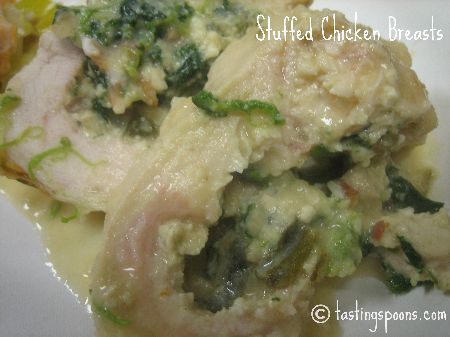
Last week I purchased a new cookbook (ah yes, yet another one). It happened to have been on sale, marked down to less than half price. Because the author was David Rosengarten, I wanted to check it out. I didn’t have any of his cookbooks, but certainly admire his knowledge. This particular book, about entertaining, is called David Rosengarten Entertains, Fabulous Parties for Food Lovers. The book is divided into types of dinner entertainment (like a Spanish paella dinner, a Texas BBQ, a Zorba style Greek dinner, pizza in the backyard, etc.). Each chapter contains everything from a general discussion of the entertainment, the recipes, how to set the table, music to play. That kind of thing. I like the book – the menus are relatively simple, and the ideas for making the table settings different and mostly easy. He also includes a list of resources at the end of each entertaining chapter (mostly online resources) for not only foodstuffs, but table settings items, to bring some flair to your dining table.
But in the first chapter he talks about how entertaining (in general) has changed over the decades. How we – now – feel the need to impress, to make a “wow” dinner. I am certainly guilty of all of that. I wish I could prepare a simple dinner and just make the companionship of friends the focus, rather than the food. Rosengarten tries to simplify an entertaining event and have it still be a “wow” but not a back breaker for the cook.
I read this introduction with in depth paragraphs about the epochs of the “dinner party.” I got a kick out of seeing myself – my style of cooking – as it has evolved since the 1960’s when I first began entertaining. He nailed it in discussing these epochs. So, for your edification, here’s, in brief, what he had to say:
- Epoch One: 1950-1975: “What Sounds Good.” Serving beef Wellington with pate to your guests meant you “loved” them.
- Epoch Two: 1975-2000: “What Looks Good.” Plating was number one – not the plates themselves, although they too could be important, but the food appearance. Many a home kitchen became a workshop for stacking, towering, drizzling and rim-dusting. Quality wasn’t of primary importance. The hosts were striving to captivate the eye.
- Epoch Three: 2001 to today: “What is Good.” Respect your guests by serving high quality ingredients, in simpler preparations, great bread, good olive oil.
Definitely, I need to take his advice to heart. Seems like nearly every dinner party I throw I overdo it. Make one too many dishes. And even though I start the food prep a day or two ahead, usually I end up being tired and weary before the guests arrive.
So, all of the above is to bring you to this recipe today. Serving chicken as an entrée is usually toward the bottom of my lists when I think about entertaining. I always think chicken isn’t fancy enough. Maybe okay for a very casual dinner, with family or close friends, but not for an all-out elegant dinner, even if the dress may be casual. Here in California guests almost always come in casual (maybe dressy casual) attire – unless you tell them otherwise. But I still may do a more elegant dinner with sterling silver and crystal glasses lined up above the plates, salad and bread and butter plates.
This recipe definitely fills the bill, though, as an elegant entrée. It’s stuffed – so it’s pretty to begin with (Epoch two). Certainly, from the title, it sounds good too (Epoch one) It has a delicious sauce that drizzles over the chicken and the side carb can help soak up the extra because it’s so darned good. This would make a very lovely entertaining entrée. It’s also delicious, which is the most important (Epoch of today). So, thank you, David Rosengarten, for refocusing my entertaining style.
printer-friendly PDF
Stuffed Chicken Breasts with Spinach, Ricotta and Gorgonzola with a Lemony Mustard Sauce
Recipe: David Rosengarten
Servings: 4
Cook’s Notes: If you don’t like Gorgonzola, try Feta, or a smaller amount (half as much) Parmesan. The chicken can be stuffed earlier in the day but not cooked at all (refrigerate). You can brown the chicken about an hour ahead, then finish the rest of the meal. The sauce is thin, so if you prefer a thicker sauce, add some flour to the saucepan when finishing up the sauce before it’s poured onto the chicken.
STUFFING:
10 ounces frozen spinach — thawed, drained, squeezed
1/2 cup ricotta cheese — whole milk or part skim
1/2 cup gorgonzola cheese — crumbled (not pre-crumbled)
4 slices bacon — cooked, crumbled
salt and pepper to taste
1 large egg
SAUCE:
2 cups chicken broth — boiled down to one cup
1/2 cup dry white wine
1 tablespoon Dijon mustard
1/4 cup lemon juice
salt and pepper to taste
3 tablespoons Italian parsley — chopped
CHICKEN:
4 pieces chicken breast half without skin — boneless
1/4 cup flour
2 tablespoons vegetable oil
salt and pepper to taste
1. Preheat oven to 350. For stuffing: combine squeezed spinach, ricotta and gorgonzola and bacon in a medium bowl. Mix well and season to taste with salt and pepper. Add the egg to the mixture and stir to combine.
2. SAUCE: Combine the reduced chicken broth (or use concentrate and make it thicker strength to start with) and wine in a medium saucepan. Bring to a boil and cook down THAT mixture by half. Whisk in the mustard and lemon juice. Season to taste with salt and pepper. Set aside.
3. CHICKEN: trim and pound chicken breasts to an even 1/4 inch thickness. Divide filling evenly among the chicken breasts, spreading it over the center of each. Fold in sides and then roll up chicken. Secure with a skewer. Dredge chicken in flour to coat, shaking off excess. Heat oil in medium skillet over medium heat. Add the chicken and cook, turning occasionally, until browned, about 2 minutes per side.
4. Transfer chicken to a casserole dish and pour the sauce over the top. Cover with lid or foil and bake for 20-30 minutes, or until chicken is cooked through. Serve sprinkled with parsley.
Per Serving: 496 Calories; 27g Fat (50.8% calories from fat); 46g Protein; 13g Carbohydrate; 3g Dietary Fiber; 169mg Cholesterol; 1117mg Sodium.






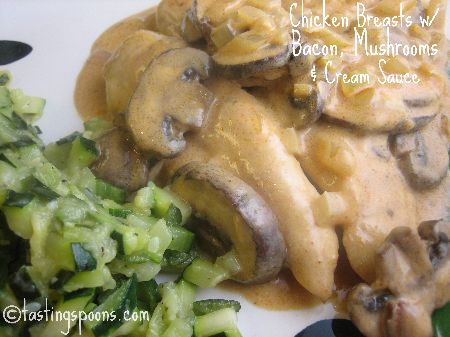
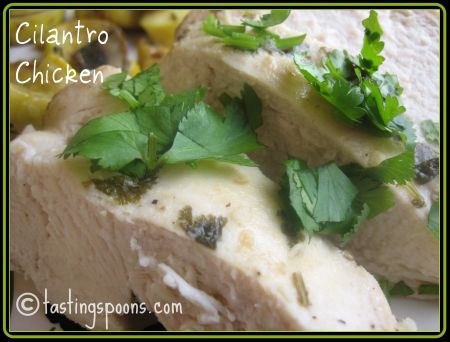
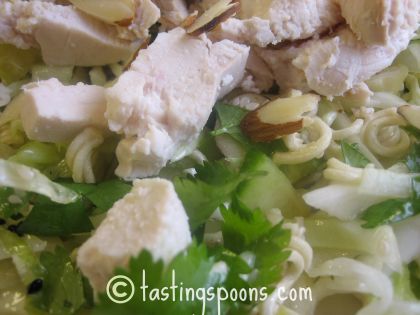
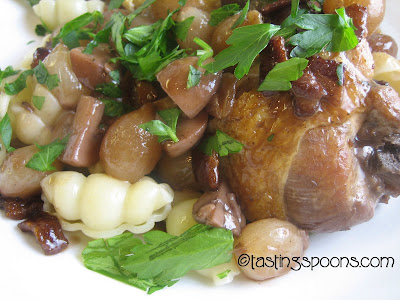

Leave a Comment!